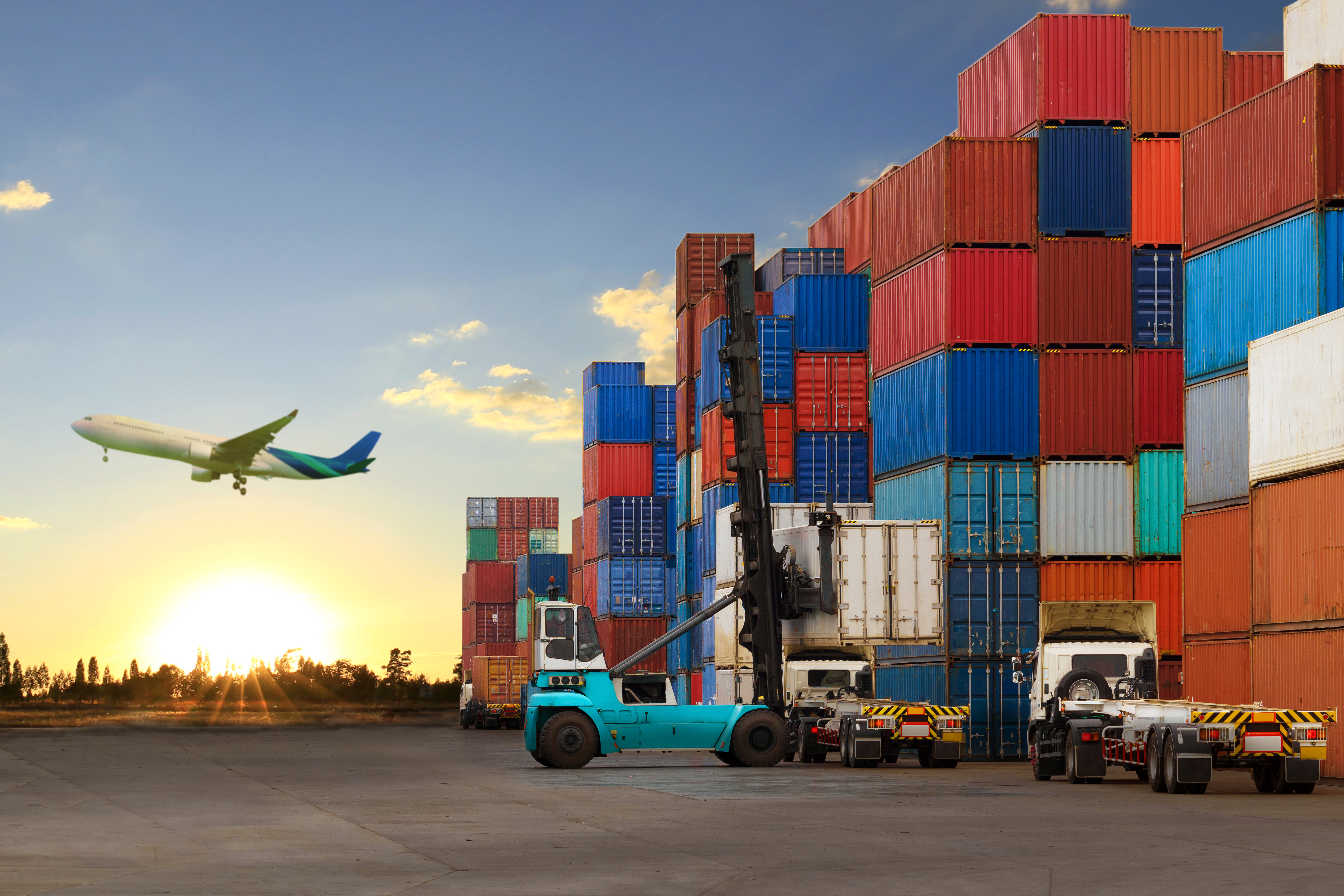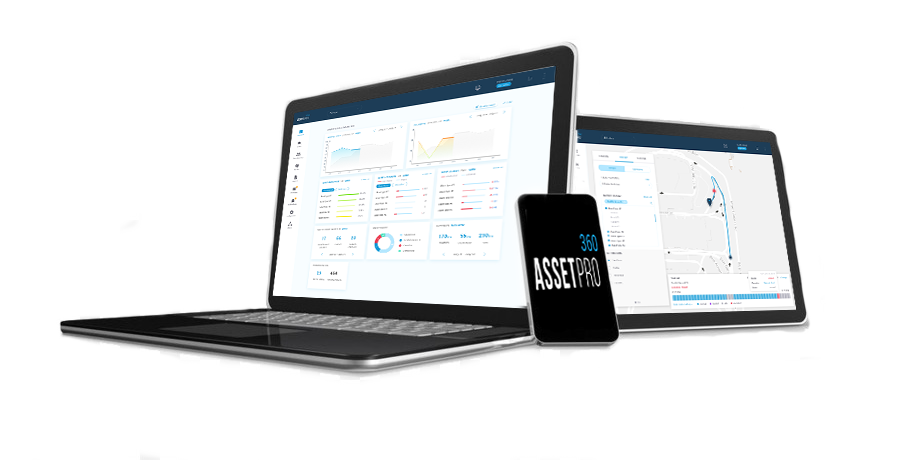10 Most Common Fleet Management Myths
Fleet management is an essential job for a warehouse, distribution center, construction site, and even airport. Despite how common of a job it is across multiple industries, there are still misconceptions of what fleet management actually is.
As a result, these misconceptions can adversely affect how an operation approaches the management of their fleet, causing it to miss out on the benefits that are associated with fleet management.
The purpose of this article is to bust those myths and set the record straight.
What is Fleet Management?

The job of a fleet manager is a complicated endeavor that involves:
- Understanding how vehicles are being used.
- Understanding why vehicles are being used.
- Identifying depreciation curves.
- Minimizing maintenance costs.
- Improving operational efficiency.
- Delivering insight and analytics.
- Improving the safety of an operation.
- Remaining compliant to regulatory organizations.
In the past, managing these issues was guesswork. However, with the introduction of digital fleet management, it has become more of a science. Fleet management software has made it possible to gather fleet data involved in how the fleet is being used and maintained, and assists in identifying depreciation, improving efficiency and providing the right kind of data that can be analyzed so that you don’t only know the present condition of the fleet, but its future as well.
10 Fleet Management Myths That Simply Aren’t True
So what are the top 10 fleet management myths that might convince someone not to invest in fleet management?
1) Fleet Management Is A Part-Time Job
Far from it. Fleet managers are involved with more employees in more situations that just about anyone else in the company. A fleet manager’s job extends beyond the typical 9 to 5 day into after business hours and weekends. He or she has to settle problems with drivers on an individual basis, deal with broken down forklifts, battery issues, a forklift operator-pedestrian accident, safety issues involving the forklift and how the operator drives it, efficiency issues, training and certifying drivers, and more, to name a few.
Fleet managers also make decisions about when to upgrade equipment, whether to buy or lease, whether the equipment he or she leases or buys is battery or fuel-powered, proper maintenance of the equipment, assuring that the picking process is efficient and more.
A part-time job? Really?
2) Fleet Managers Have To Be On-Site To Do Their Jobs
A fleet manager with a smartphone or a laptop computer can manage a fleet whether he is on the warehouse floor, tucked away in an office on-site, at home, or traveling within the country or abroad. Through telematics devices and the Internet of Things, fleet managers can remain connected to the fleet no matter where he or she is. He or she can receive data about operator performance, efficient equipment use, and cost efficiencies in real-time. And, using the same technologies, he or she can respond to any issue about the fleet that arises. Because of these technologies, the fleet manager is no longer a prisoner to one site of operations but can scale visibility to multiple sites, with less effort.
3) The Telematics Device You Use Has To Come From The Equipment Manufacturer
 As most operations rely on different manufacturers’ products to make up their fleet, it can become a nightmare pretty quickly if every piece of equipment operates on a separate fleet management system. None of the data is uniform; the fleet manager has to know how to operate multiple platforms, and when it comes to customer service, they have to deal with multiple providers.
As most operations rely on different manufacturers’ products to make up their fleet, it can become a nightmare pretty quickly if every piece of equipment operates on a separate fleet management system. None of the data is uniform; the fleet manager has to know how to operate multiple platforms, and when it comes to customer service, they have to deal with multiple providers.
While you may be able to patch things together in the short term, to have truly effective fleet management you should look for telematics devices that come from an independent source that works with any brand of equipment so you can allow you to consolidate all systems into one.
4) Fleet Managers Are Being Replaced By New Technologies
Although indeed, new technologies that enhance warehouse or distribution center operations are always being introduced, fleet managers are needed to monitor and interpret the data that these technologies generate. He or she must also respond to the data being generated by the technologies so that warranted improvements can be implemented.
5) Applying Fleet Management Software Is Too Difficult To Implement
The proper supplier of the software should make the implementation of the software easy and quick. But the relationship shouldn’t stop there. So that you get the real benefit out of your software, they should also provide ongoing training and technical support to assist you with understanding the data being collected from your fleet. A good supplier will train your business on how to use their software and also provide services to help you understand the data on an ongoing basis.
Moreover, when choosing telematics to monitor your fleet, selecting a provider who integrates with any existing software platforms makes the job exponentially easier.
6) Fleet Management Is Only For Fuel Powered Vehicles Not Battery Powered
 As electric vehicles are newer to the market, you may not think about using telematics for your EVs and particularly your batteries as often. That doesn’t mean they can’t. Today’s telematics devices are designed to do a lot of things, including monitoring the condition of the battery of an electric forklift or other equipment. These devices warn you when the battery needs water, requires a charge and more so you can prolong the life of your electric vehicles and their batteries.
As electric vehicles are newer to the market, you may not think about using telematics for your EVs and particularly your batteries as often. That doesn’t mean they can’t. Today’s telematics devices are designed to do a lot of things, including monitoring the condition of the battery of an electric forklift or other equipment. These devices warn you when the battery needs water, requires a charge and more so you can prolong the life of your electric vehicles and their batteries.
7) One Vehicle Is The Same As Any Other
When it comes to vehicles that are used in warehouses and distribution centers, this is not necessarily true. Different things need to be monitored based on the vehicle and how it is being used. For example, the battery used to power electric forklifts needs to be monitored in real-time for water levels and charging opportunities. In another occasion, gasoline or a propane-powered vehicle is used and the hour meter needs to be monitored to ascertain efficiency of use and determine proper maintenance schedules. In another case, the safety in operation of a forklift may need to be monitored to train a new driver and prevent unauthorized drivers from operating dangerous machinery.
As a result, your telematics device provider must offer a range of devices designed to gather different types of data. Having the ability to mix and match telematics devices to gather all the data necessary to properly manage the fleet allows for fleet managers to use telematics a cost-effective and more productive way.
8) Smaller Fleets Don’t Need To Be Managed
Fleet management software is beneficial for any business that utilizes vehicles, whether it is small or large. Regardless of your size, you are going to want to manage workflow, send alerts to individual drivers, and generate reports concerning the efficiency of operation and other issues. Fleet management software is beneficial to any size business because it helps to lower expenses and increase productivity.
This goes back to the point above. If you choose a provider that has a range of telematics options that fit your budget, fleet management can be affordable, no matter the size of your fleet.
9) Fleet Management Is Only About Cost Savings
A key reason for fleet management indeed is to identify cost savings, but it doesn’t just stop there. Another critical function is to help ensure that the equipment being monitored is used safely. If a driver is not operating his vehicle safely, then the fleet manager can take steps to educate him on proper safety methods. The data generated concerning safe operation can also help the fleet manager to identify what drivers need re-training.
10) Fleet Management Software And Telematics Are Too Expensive
Although the initial cost may be expensive, the use of fleet management software and telematics identifies ways a business can save money. Thus, the return of investment (ROI) is dramatic. These technologies can assist in scheduling workers more efficiently, helps identify ways to save money on fleet operations and maintenance, helps determine whether a more efficient layout of the warehouse or distribution center is necessary to save on costs and more. You can’t just consider the initial expense to determine if something is worth paying. You need to also consider the ROI and balance it with the cost to determine the best way to spend the company’s money.
 Access is only fleet management provider to offer a complete line of telematics devices to monitor any kind of powered equipment, vehicle, or batteries. All data is displayed in our cloud application, AssetPro360 that connects to our entire range of products. AssetPro 360 generates reports to show how to improve asset and battery performance, maintenance, and safety for a more productive, safer, and cost-effective operation.
Access is only fleet management provider to offer a complete line of telematics devices to monitor any kind of powered equipment, vehicle, or batteries. All data is displayed in our cloud application, AssetPro360 that connects to our entire range of products. AssetPro 360 generates reports to show how to improve asset and battery performance, maintenance, and safety for a more productive, safer, and cost-effective operation.
To learn more about our products, visit the Access website, or contact an Access representative.
